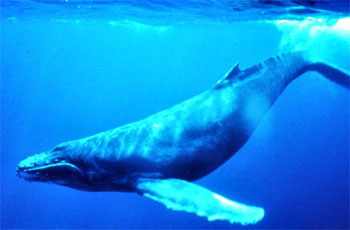How many whales are enough?
How many whales are enough?
mongabay.com
November 29, 2006
Iceland’s decision to resume hunting endangered fin whales raises an important question: how many whales are enough to sustain a population? While conservionists will debate over the actual number using varying models and population studies, a new paper published in the journal Bioscience attempts to establish a new system for setting population targets for threatened species.
Dr. Eric Sanderson, an ecologist with New York-based Wildlife Conservation Society (WCS), proposes a simpler, four-tiered system to measure conservation success to replace the 18 different approaches currently used by wildlife managers to set population target levels intended to create self-sustaining populations.
“People want much more from wild animals than to see them just persist: we want animals to interact with their environment, evolve over time, be beautiful and useful to us, and to satisfy ethical teachings regarding respect for nature,” said Dr. Sanderson.
 Humpback Whale, Megaptera novaeangliae. Courtesy of NOAA. |
Sanderson says that “once demographic sustainability has been achieved” conservation efforts should move beyond merely saving species to promote “ecological functionality,” (tier 2), meaning a species will be abundant enough to serve its ecosystem role. Once conservation has been ensured, wildlife managers should target “sustainable human use” (tier 3), where “there are enough animals that they can be used by humans, consumptively (as in hunting or fishing) or non-consumptively (as in tourism).”
Sanderson says the highest tier will be reached when a species is restored to its “historical baseline”, or how it existed before the impact of mankind.
“Having animals acting like animals in the fullest sense, seems the standard conservationists should seek, whether it’s bison on the Great Plains or Asia’s forests with tigers and their prey,” said Sanderson.
“Human society needs to recognize, now and into the foreseeable future, that we are making the decisions about how many animals live with us, and thus to make those decisions from a carefully considered, ethically consistent, and clearly articulated view of what we want from nature,” he concludes.
This article is based on a news release from WCS.
>